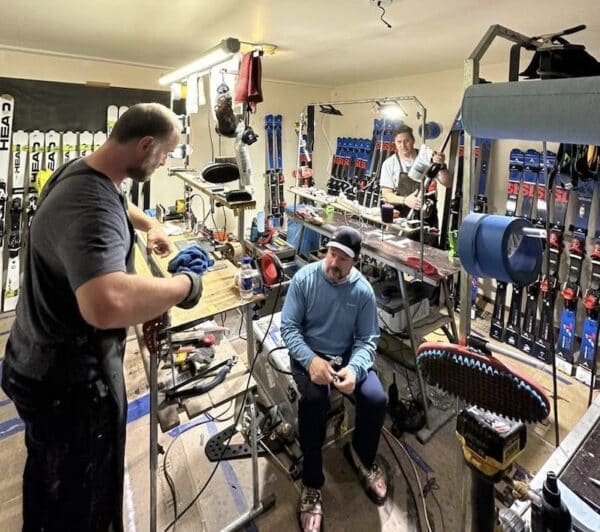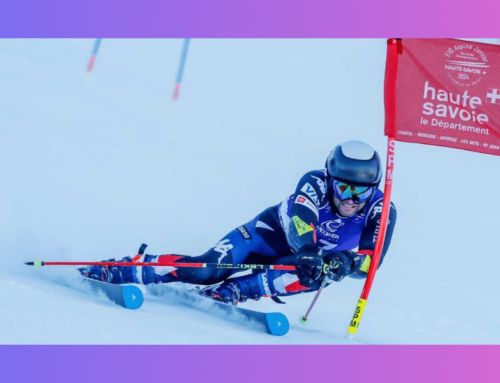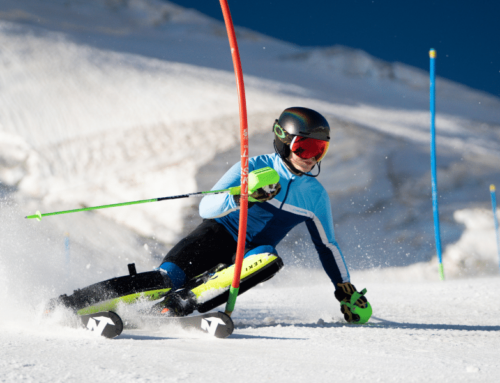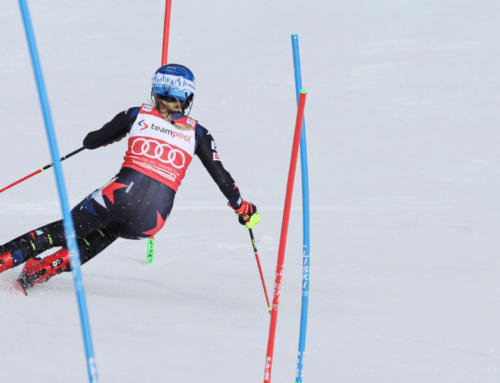Unsung Heroes of Ski Racing: The Dedicated Ski Technicians
Have you ever pondered the consistent peak performance of ski racers? While you likely correctly associate it with their rigorous training, relentless pursuit of mastering their craft, and countless repetitive runs through the training courses, there’s a fascinating element you might not be aware of: the existence of a concealed team working tirelessly behind the scenes, supporting the racers you see on the mountain.
A mere two-second gap can distinguish 1st from 30th place. Hence, the unsung heroes, ski technicians wielding invaluable expertise, play a pivotal role. With lifetimes of ski racing and equipment knowledge, they toil for hours, refining skis to perfection. Joining this dedicated cadre demands relentless effort and unwavering commitment.
During the month-long training camp in Ushuaia, Argentina, I spent time with three dedicated ski technicians. While I’ve always been fond of their profession, this experience deepened my admiration and respect for their work. Observing their relentless commitment and expertise in action, I gained a profound appreciation for their vital role in supporting the team’s success. It’s not just a job; it’s a relentless pursuit of excellence that demands unwavering dedication and a profound understanding of the sport, and witnessing it firsthand left an indelible mark on my perspective.
I had the pleasure of meeting Jake Dippy (USA), Marco Skube (Slovenia), and Daniel Andesilic (Croatia), who is famous for tuning the Fischer skis of Ivica Kostelić when he won the World Cup overall.
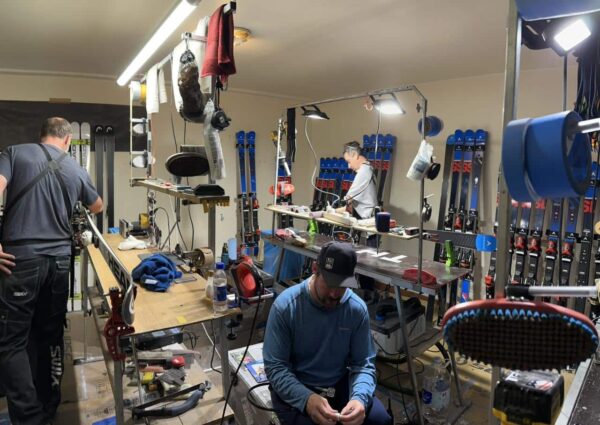
The three are part of the ski technician crew of Team USA’s Men’s Tech Team. Our conversation delved deep into their world, discussing every facet of their crucial role.
All the US Ski Team members I communicated with marveled at the warm welcome and kind interactions with Ushuaia’s locals and tourists and the region’s profound appreciation for ski racing.
Dippy, a young CU Boulder student who does ski service for Jett Seymour, comments, “The center of ski racing is certainly in Europe, but it’s even more appreciated here than in the US.”
Skube has decades of elite experience and adds, “The locals’ excitement is refreshing. People chat, take pictures, and are incredibly friendly, which is fantastic.”
Skube and Andesilic gave me a full report of their schedules. “We’re up at 6:30, load all the athlete’s equipment by 7:50, and head to the mountain. We work through the morning, then, if all goes as planned, we take a lunch break, a short one, and then from 1:30 in the afternoon to sometimes 2:00 am, we are here in the ski room,” says Skube. “The workload will depend on what was done during the day; for SL training, we’ll work on four or five pairs of skis per athlete, but we will also work on the other skis considering snow conditions for the upcoming days.”
While we talked, the guys worked on skis for four athletes, surrounded by Fischer, Dynastar, Head, and Rossi skis. There were also many brands of ski poles, including One/Way. Andesilic mentions, “We brought 63 gear bags from Europe, and Dippy added another 72 from the US, totaling 135 bags.”
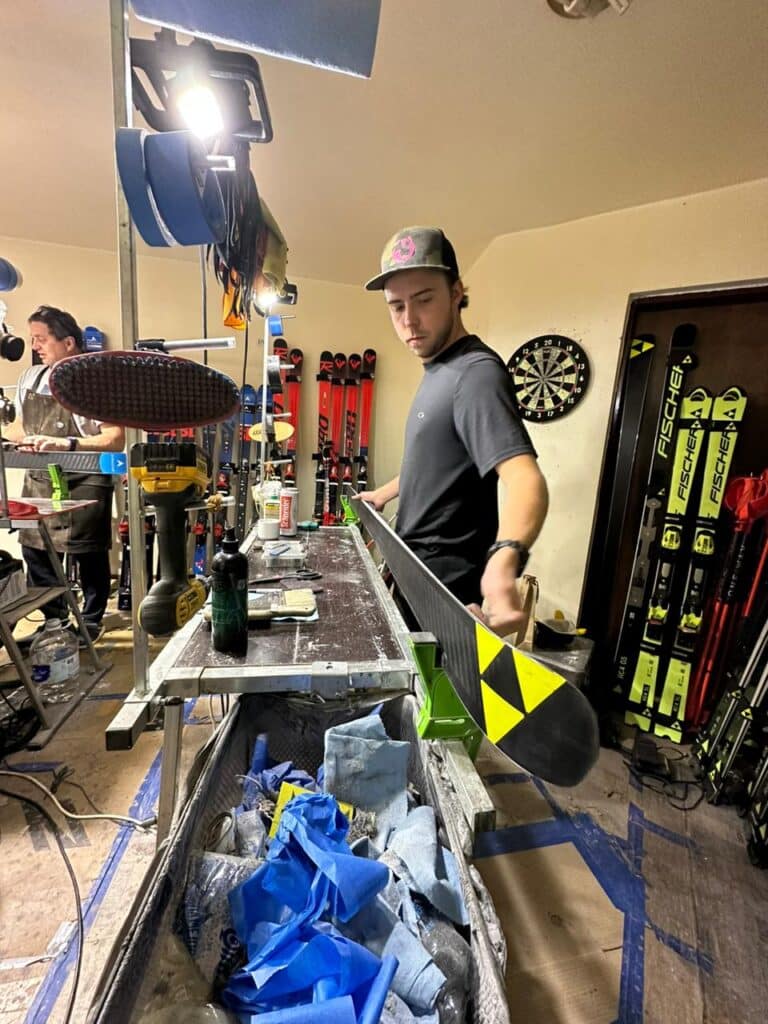
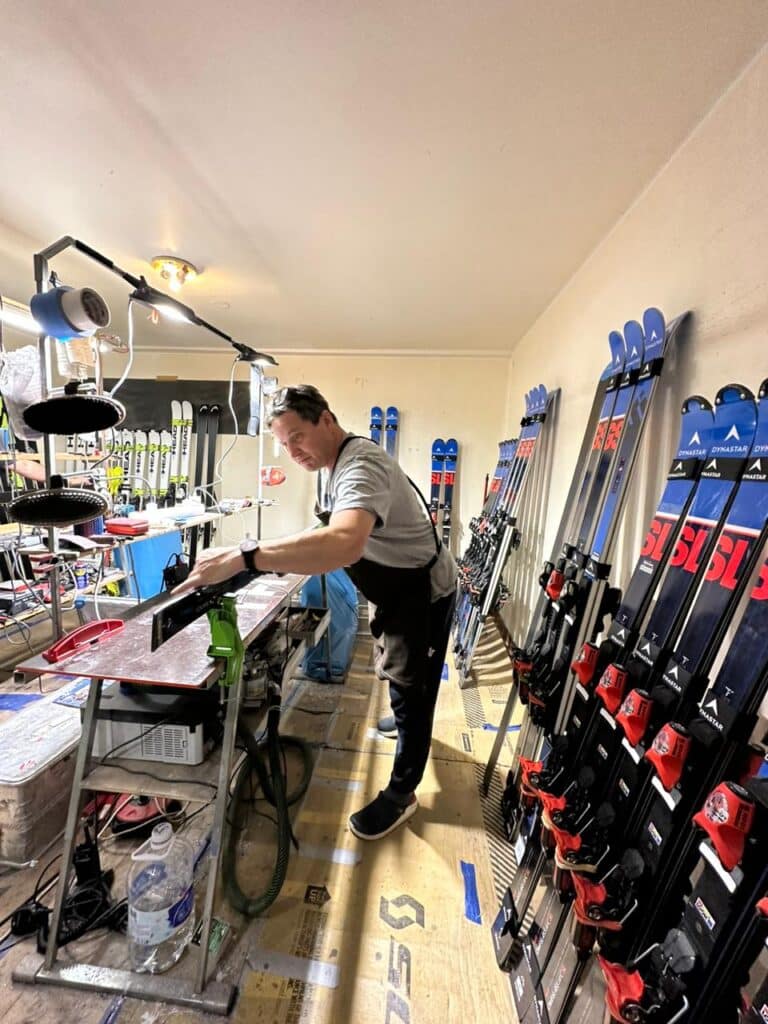
During our conversation, Andesilic tuned Tommy Ford’s skis, Dippy worked on Seymour’s, and Skube handled Ben Ritchie’s gear. Dippy pointed at the metal boxes, saying, “We each carry three or four boxes loaded with tuning tools and materials when we travel, along with the guys’ bags, boot bags, and pole bags. It’s a lot!”
Skube and Andesilic chuckled, adding, “We never know what we might need. It’s a lot of gear, but we use it all.” The ski technicians travel with complete workshops to meet any ski service needs that arise; it’s their routine.
However, they mentioned this month-long camp is “easier” because “We’re settled here for a month, no moving. We can fully unpack, set up properly, and assess and service all the equipment. It takes about two to three hours to go from fully set up to completely packed and ready to go.”
Considering their immense responsibilities, it’s a significant workload for these guys entrusted with their athletes’ vital equipment.
Dippy comments, “Traveling on the World Cup is hectic, two days any one place, max four, unpack, prep, pack, run to the next place, it’s crazy!”
Unlike European teams who occasionally can commute home, these guys are always on the road.
They appreciate this month-long camp for prep time and the opportunity for equipment management, which makes next season’s World Cup travel less stressful.
Skube shows me Ritchie’s skis, mentioning, “I had time to assess what works well and gain a better understanding of edge issues.”
Andesilic adds, “On the road, time is limited; this camp is precious for the future.”
Ski fans, racers, and parents are undoubtedly aware of some of the work behind the scenes. However, my dream afternoon gave me new insight and three new racing friends. This article showcases they’re THE TEAM BEHIND THE TEAM.
